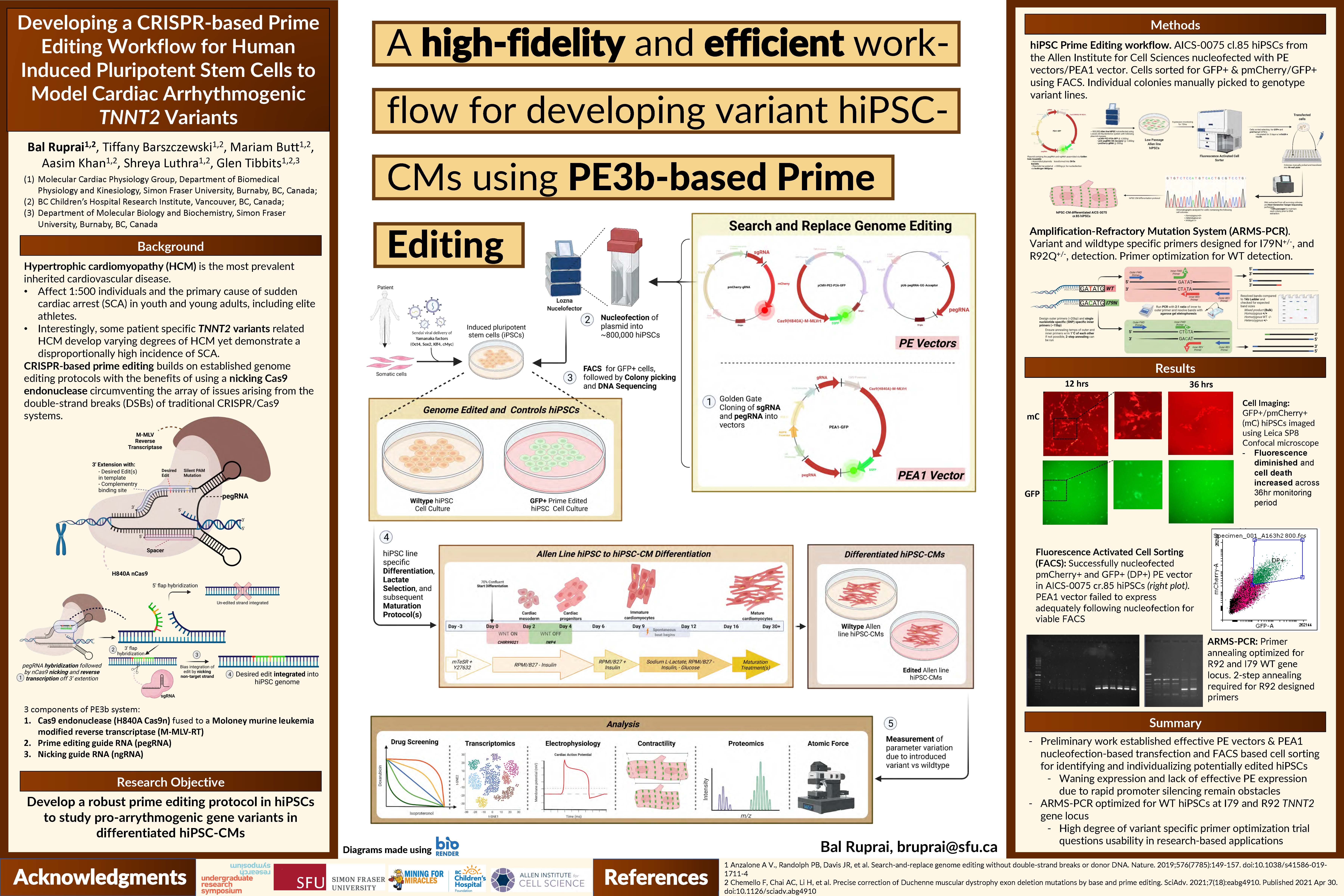Developing a CRISPR-based Prime Editing Workflow for Human Induced Pluripotent Stem Cells to Model Cardiac Arrhythmogenic TNNT2 Variants
Main Article Content
Abstract
Hypertrophic cardiomyopathy (HCM) is the most prevalent inherited arrhythmia (irregular heartbeat), affecting 1:500 individuals and the primary cause of sudden cardiac arrest (SCA) in youth and young adults, including elite athletes. HCM presents with an enlargement of the ventricles/septal wall, disarray of cardiomyocyte (contracting heart cells) alignment, and electrically inactive fibrotic tissue deposition. These variations to the typical cardiac composition produce substrates for chaotic electrical activity across the myocardium (the heart's muscular tissue), preventing normal contraction and relaxation cycles. Various mutations have been identified in genes encoding cardiac contractile proteins. Of concern, some patients harbouring TNNT2 gene variants (aberrant gene sequences) develop varying degrees of cardiac hypertrophy yet demonstrate a disproportionately high incidence of SCA. In this study, to better understand the effect of these variants, we are developing a CRISPR-based prime editing protocol to edit these variants into the genome of hiPSCs. In our lab, these hiPSCs are routinely differentiated into beating hiPSC-CMs, which allows us to study arrhythmias using a variety of electrophysiological (the electrical activity underpinning physical dynamics of cardiac cells) and contractility applications. Prime editing is a new system that has not yet been established to produce cardiac gene-specific edits in hiPSCs. Here, we aim to develop hiPSC-derived CMs with three known HCM associated TNNT2 variants (I79N+/-, R92Q+/-, and R278C+/-) using prime editing. Ultimately, this research provides the opportunity to understand the mechanisms underlying these variants specific arrhythmia and aid in developing symptom alleviating and curative medications, improving patients' quality of life.
Faculty Supervisor:
Dr. Glen Tibbits, Biomedical Physiology and Kinesiology, Simon Fraser University
Article Details

This work is licensed under a Creative Commons Attribution-NonCommercial-NoDerivatives 4.0 International License.

